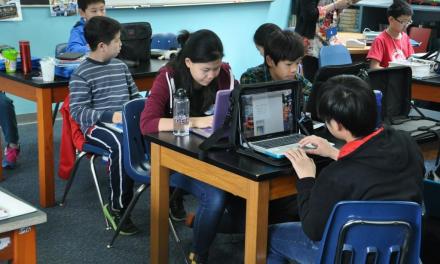The average classroom is home to wonderfully diverse students – each with their own personality, abilities, strengths and weaknesses.
Students have a variety of learning styles that influence how effectively they can understand and analyse the topic at hand.
Creating versatile lesson plans that take account of these different learning styles is critical if the wildly varied population of the typical classroom is to benefit all, equally.
And this can only begin with an understanding of the seven different learning styles.
The seven learning styles – in a nutshell
- Visual (spatial): They prefer pictures, visuals, images, and spatial understanding
- Aural (auditory-musical): They absorb information when spoken, in audio format and work well with music
- Verbal (linguistic): They prefer to use words, both in speech and writing
- Physical (kinaesthetic): They prefer to use their body, hands and sense of touch
- Logical (mathematical): They like to use logic, reasoning and systems
- Social (interpersonal): They work well in groups and alongside learning partners
- Solitary (intrapersonal): They prefer to work autonomously and love self-study
Learning styles – the science of the brain
Visual
The occipital lobes (located toward the back of the brain) manage the visual senses.
Aural
The temporal lobes process aural content, while the right temporal lobe is particularly active for processing music.
Verbal
The temporal and frontal lobes are essential for absorbing verbal sounds (in particular, the specialised areas of the Brocaïs and the Wernickeïs).
Physical
The majority of physical movement is managed by the cerebellum and the motor cortex (situated at the back of the frontal lobe).
Logical
In the main it is the left side of the parietal lobes that handle logical thought.
Social
The frontal and temporal lobes handle much of our social activities. The limbic system (which influences emotion, mood and aggression) also influences social skills and solitary styles.
Solitary
The frontal and parietal lobes, and the limbic system, work in unison during solitary work.
Learning Strategies
Visual Strategies
- Highlight key terms in colour codes
- Use graphic organisers such as charts, graphs, infographics and diagrams
- Recreate pages/visuals/concepts from memory
- Replace important words with symbols or initials
Aural Strategies
- Record your notes and lessons and listen to them to revise
- Hold a debate or group discussions to develop an idea
- Read notes out loud
- Explain and discuss notes to peers and other ‘aural’ learners
Read/Write Strategies
- Write and rewrite your words and notes
- Rephrase the core concepts and principles to gain a deeper understanding
- Translate diagrams, charts, visuals, infographics and graphic organisers into statements
Kinaesthetic Strategies
- Transform abstract concepts into real-world examples, applications and case studies
- Undertake lab experiments or projects
- Create and use pictures, visuals and photographs that demonstrate an idea
Where next?
It’s one thing to provide a brief overview of what a learning style is and how it influences a student’s preferences when learning. It’s entirely another to be certain of an individual’s actual learning style.
So get your class to take a learning styles test to be certain.









